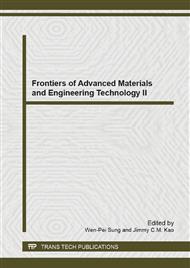p.1322
p.1327
p.1331
p.1335
p.1339
p.1345
p.1349
p.1353
p.1357
Research and Realization of Apron Protection System Based on Internet of Things
Abstract:
The airport perimeter intrusion prevention system is the first defending line of airport security system, and its position is very important. Based on the correlation of air defense, anti-technology and anti-intrinsic, paper compares the advantage and the disadvantage of domestic airport in the selection of the electronic fence pattern. Through technical analysis of the use of acceleration transducer in networking technology for the prevention of airport apron, combined with the actual situation of the Hangzhou Xiaoshan International Airport in airport apron prevention, the ability of electronic fence used in tracking protection and discrimination for location has been improved through system optimization, expanding the application of the electronic fence at the airport apron prevention system. The paper also prospects the application future for internet of things used in the apron protection system
Info:
Periodical:
Pages:
1339-1344
Citation:
Online since:
April 2014
Authors:
Price:
Сopyright:
© 2014 Trans Tech Publications Ltd. All Rights Reserved
Share:
Citation:


